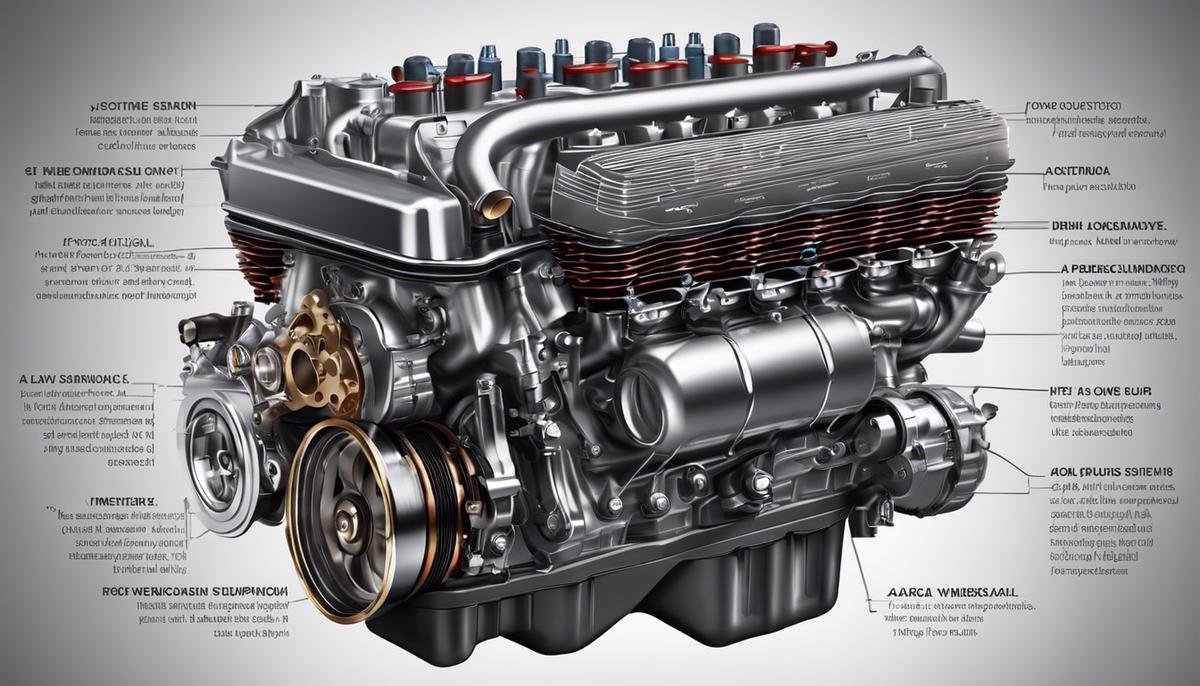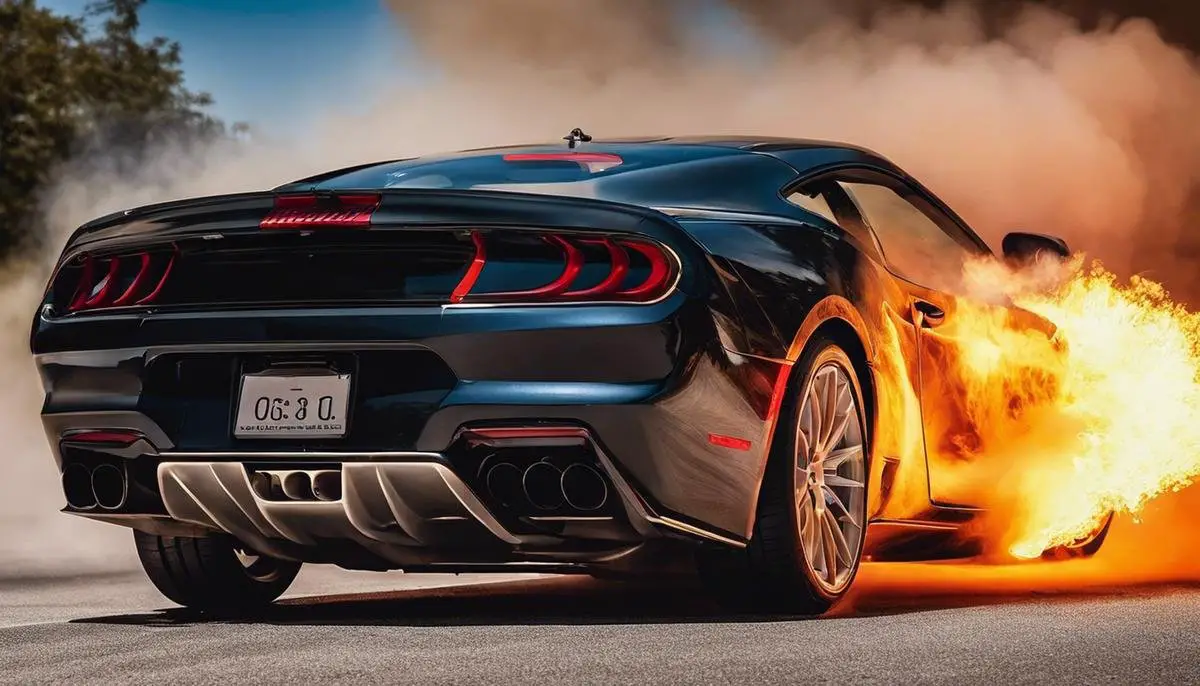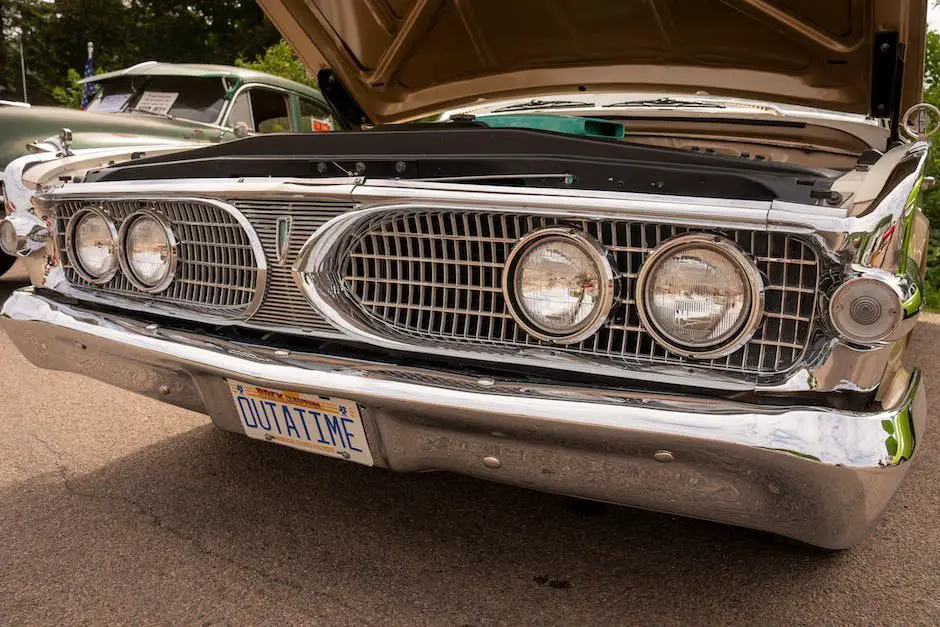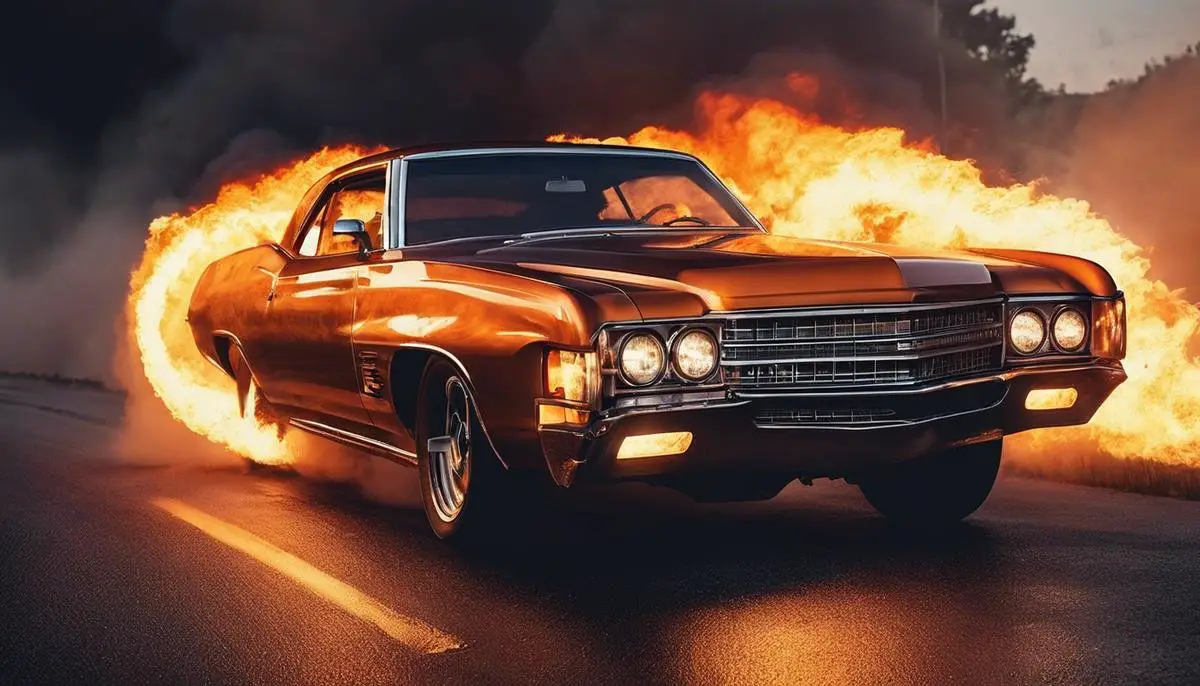
Engines roaring, tires screeching, and an occasional backfire is a soundtrack rolling in the background for most car enthusiasts. However, the notorious bang known as backfire is not music to the ears for many car owners. It signifies something awry in the beloved metal beast's guts. Delving into the mystique of a car backfire, it's essential to understand the vehicle’s internal combustion process, and all the nitty-gritty of fuel injection, valve timing, and cylinder firing.
Mechanics of a Car Backfire
When it comes to cars, the term “backfire” can be quite a misnomer. In the face of popular auto-fiction, a vehicle backfire doesn’t necessarily mean that something is amiss or defective. Knowing the mechanisms at play when a car backfires often helps to demystify this seemingly alarming phenomenon. Let’s cut right to the chase and delve into the nuts and bolts.
To begin with, let's understand what exactly is a car backfire. Simply put, a car backfires when some unburned fuel in the engine gets ignited in a place other than the combustion chamber. This often unleashes a loud popping noise, or in some cases, flames from the exhaust, both of which lend to the dramatic depiction of backfires in media.
Why does this occasion happen you might wonder? There are mostly two major mechanical realities that pave the way for a backfire: incorrect timing and rich air-fuel mixture.
Firstly, the timing of the spark that ignites fuel in the combustion chamber is meticulously controlled to optimize engine performance. However, if the timing is off, unburned fuel could get into the exhaust, causing a backfire. This timing issue could stem from a variety of factors including timing belt or chain wear, defective sensors, or a faulty Electronic Control Unit.
Secondly, let's explore the air-fuel mixture element. For combustion to occur optimally, the mixture of air to fuel has to be within a certain range, usually expressed in ratios. A “rich” mixture, where there is excessive fuel as compared to air, could lead to incomplete combustion. Consequently, some of this extra fuel might escape into the exhaust and cause your vehicle to backfire. This condition can be caused by problems such as a malfunctioning mass airflow sensor, or a damaged fuel injection system.
In modern cars, backfires are seldom due to robust emission control systems and advancements in modern ignition. However, in a classic car or modified vehicle, they may still occur. It's important to note that while an occasional backfire is not cause for alarm, persistent backfire can degrade exhaust system components leading to costly repairs.
So, there you have it. Behind the noisy spectacle of a backfiring car lies a simple explanation grounded in engine mechanics and fuel dynamics. While it’s a spectacle often loved in motor races and sympathized in vintage car rallies, a backfire is not always desirable, nor is it a sign of power or thriving machismo. It’s a simple reaction to some very fundamental mechanical realities of the car engine.

Classic Causes of Backfires
Diving into further logistics of what triggers a backfire, let’s first note that the fuel system can also significantly contribute to this issue. Even seemingly minuscule malfunctions such as a leaking fuel injector can instigate an extra amount of petrol that goes unburned, leading to those notorious popping sounds. Moreover, if the fuel pressure regulator breaks down or is unable to maintain optimal pressure in the fuel lines, excessive fuel can find its way into the combustion chamber and subsequently cause backfires.
Not confined to the logistic confines of the engine, the exhaust system can also contribute to backfiring. An exhaust leak, for instance, can suck in oxygen that mixes with unburned fuel within cars running on a rich air-fuel mixture, causing an unintended secondary combustion. Thus, any unaccounted-for changes in oxygen levels within the exhaust system may result in backfires.
Apart from these mechanical and systemic factors, human error or negligence can also serve as a potential catalyst for backfires. Any miscalibration or improper handling of the ignition system, fuel system, or exhaust system could make your car susceptible to backfiring. For instance, a misjudged spark plug gap might lead to incomplete combustion, causing leftover fuel to ignite and culminate in a backfire.
Another common culprit on the electronic front is a faulty spark plug or ignition coil. These essential components have the task of sparking up the air-fuel mixture. If they don’t function correctly, a spark might occur at an improper time or fail to occur at all, causing unburned fuel to enter the exhaust system, leading to—you guessed it—a backfire.
Besides these, certain modifications done to the car can also instigate backfires. Some performance-enhancing modifications make more aggressive use of the air-fuel mixture or alter the exhaust system, which can increase the car's likelihood to backfire. Therefore, be cautious of how these custom mods might ultimately impact your car's combustion process.
In conclusion, if your car is backfiring regularly, it's crucial to get it checked promptly. Most of the reasons leading to backfires not only hamper the car's performance but also potentially signal underlying issues that could escalate into more costly damages. Therefore, maintaining a regular maintenance schedule and promptly rectifying any identified issues is key to enhancing your car’s longevity and efficiency.

Impact of Backfires on Car Performance
The Car Backfire: Understanding its Impact and Longevity
Delving further into the intricacies of car backfires, let's explore how this mechanical failure impacts the overall performance and longevity of an automobile.
Every car enthusiast knows that backfire has negative implications on a vehicle's overall performance. One undesirable consequence is engine power loss, which occurs as backfires disrupt the typical ignition sequence. Should the air-fuel mixture ignite while the intake or exhaust valves are open, it can cause a momentary 'putter' or retreat in engine power. This sudden engine impedance effectively reduces the vehicle's performance rate, presenting an irksome hitch to smooth rides and quick accelerations.
Backfires can be incredibly harmful to the car engine, especially if they are persistently occurring. A single backfire might not cause a noticeable performance issue, but recurring ones may lead to serious engine damage. Over time, powerful backfires could result in worn-out valves and damaged cylinder walls. This substantially nullifies the engine's potential, resulting in a saggy performance over time and ultimately diminishing the lifespan of the car.
Surveying the unwanted repercussions on fuel consumption, backfire-related problems can lead to a significant increase in fuel consumption too. The unburned fuel resulting from rich air-fuel mixture doesn't just create a loud bang; it exhausts the fuel reserves much faster. Users may end up burning a lot more fuel than required, inversely affecting the fuel economy and denting the pocket.
Furthermore, backfires can inflict irreparable harm on the exhaust system. Persistent explosions in the exhaust can severely damage the catalyst converter - a critical component of the exhaust system. Repairing or replacing these parts can be expensive and time-consuming, making it even more crucial to diagnose and rectify backfire issues promptly.
Safety implications of backfires shouldn't be overlooked either. Explosions occurring at the tail pipe can pose a serious threat to any nearby objects or pedestrians. They can even result in fires if there are flammable substances around. Hence, backfires present more than just a mechanical concern; they manifest as safety risks too.
Finally, continuous backfiring can negatively impact the driving experience, adding stress and worry to what should be an enjoyable activity. The loud explosive noises, power issues, increased gas consumption, and the potential for expensive repairs can all add up to give drivers a subpar experience.
In conclusion, backfiring may seem like a minor annoyance, yet the repercussions on an automobile's performance and longevity tell a different tale. With this in mind, every car owner and enthusiast should consider backfires as a significant call for action - not just a peculiar sound accompanying an epic drive!

Tech Solutions to Prevent and Fix Backfires
Jumping ahead to advanced technological solutions, industry leaders and enthusiasts have spurred cutting-edge innovations aiming to both prevent and rectify car backfires efficiently. Here's a brief look at some promising options:
- OBD Scanners: Extremely beneficial to detect backfires and their potential causes. This diagnostic tool communicates with the car’s computer system, retrieving data about the engine, exhaust and ignition conditions to identify the failure points. Many scanners now offer real-time monitoring, providing continual oversight that helps prevent issues from escalating. Coupled with smartphone apps, drivers get instant updates, allowing swift action even in transit.
- Automated Timing Adjustment: Harnessing the power of advanced vehicle ECUs, manufacturers are integrating automated timing adjustment features. These systems automatically adjust the timing, reducing the risk of backfire due to incorrect timing. This sophisticated approach uses sensors and high-speed processors to continuously monitor and correct engine parameters during operation.
- Fuel Monitoring Systems: Continuing on the trajectory of automation, sophisticated fuel monitoring systems have emerged. They maintain an optimal air-fuel mixture in real-time, thereby preventing backfiring due to rich air-fuel mixture. This useful technology tracks engine metrics and adjusts fuel injection accordingly to maintain the perfect balance. Angled towards adaptability, they factor in varying parameters such as altitude and temperature which could intrude on functionality.
- Airflow Improvement Components: Backfires can also occur due to airflow blockages in the exhaust system. Employing advanced technology in manufacturing parts such as high-flow catalytic converters and performance exhaust systems can reduce backfire chances significantly. These are engineered to support uninhibited airflow while also enhancing the overall power and performance of the vehicle.
- AIO Maintenance Tools: Another intriguing aspect is the rise of all-in-one (AIO) maintenance tools. These provide scheduled service reminders, keep an eye on deterioration, and allow for preventive actions. Manufacturers are constantly innovating to increase their diagnostic capabilities and accuracy. Streamlining maintenance, they offer an effective way to catch potential backfire triggers before they become a bigger issue.
- Self-Learning ECUs: Finally, for the high-end car segment, the introduction of self-learning ECUs has turned heads. These intelligent computer systems learn the driver's habits and vehicle's behavior over time, adjusting timing, fuel-air mixture, and other crucial engine parameters accordingly. This futuristic technology not only keeps backfires at bay but also customizes the vehicle's performance to the user’s individual driving style.
Leveraging technological solutions like these can play a significant role in managing and preventing backfires. However, it's worth remembering that although technology and preventative measures can help, they do not replace good maintenance habits. Stay one step ahead of issues, because the age-old adage holds - prevention is better than cure. Embrace tech solutions, but respect the anatomy of the machine – always. Technology's role is to enhance, not replace.

As automobiles get more complex with emerging technologies like fuel management systems and smart diagnostic tools, understanding the ABCs of car backfires becomes more crucial. Although a backfire doesn’t spell immediate doom for your vehicle, recurrent occurrences could signal an impending problem that needs your attention. By pinpointing the causes, acknowledging the impact and seeking tech-empowered solutions, car owners can ensure a smoother, quieter ride into the twilight.
Now with html tags:Engines roaring, tires screeching, and an occasional backfire is a soundtrack rolling in the background for most car enthusiasts. However, the notorious bang known as backfire is not music to the ears for many car owners. It signifies something awry in the beloved metal beast's guts. Delving into the mystique of a car backfire, it's essential to understand the vehicle’s internal combustion process, and all the nitty-gritty of fuel injection, valve timing, and cylinder firing.
As automobiles get more complex with emerging technologies like fuel management systems and smart diagnostic tools, understanding the ABCs of car backfires becomes more crucial. Although a backfire doesn’t spell immediate doom for your vehicle, recurrent occurrences could signal an impending problem that needs your attention. By pinpointing the causes, acknowledging the impact and seeking tech-empowered solutions, car owners can ensure a smoother, quieter ride into the twilight.
Image Source: https://writio.com/


